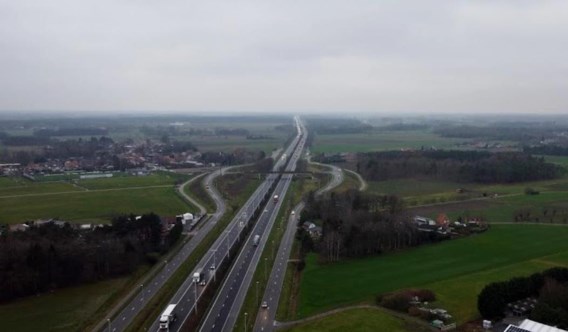As the outcome of armed conflicts is often partly determined by who is logistically best organised, the European Union is giving Belgium over €60 million to make roads and railway lines suitable for heavy military transports more quickly.
In recent years, the United States has regularly made it clear that – in NATO context – transport of heavy equipment from the ports of Antwerp and Zeebrugge to the East of Europe could be improved – something that is proving crucial after Russia's invasion of Ukraine.
"Given the Russian aggression against Ukraine, the problematic military mobility within Europe is now top of the agenda," the office of European Commissioner for Transport, Adina-Ioana Valean, told De Standaard.
And so, the EU is willing to spend a lot of money to improve that mobility. For Belgium, that means that after millions of the EU's euros already went into modernising the strategically important marshalling yard in Plombières (Liège) in 2022, the EU is now also subsidising two major military mobility projects in Flanders – nearly €31 million will go to railway infrastructure manager Infrabel, for instance.
Sinking through the road surface
With that money, a number of marshalling yards in the port of Antwerp – where huge US military transports often arrive by ship – are to be upgraded and expanded, "thereby greatly increasing their capacity and speed," according to Valean's office. Specifically, the works should allow heavy war material to be loaded onto freight trains heading for Germany much faster and more efficiently than today.
Additionally, €30 million of EU money is flowing into the province of West Flanders to make sure the E34 motorway between (the ports of) Antwerp and Zeebrugge is fully completed much faster than planned, which is also good news for regular motorists.
Between Maldegem (in the province of East Flanders) and Damme (about 16 kilometres further, in the province of West Flanders), the motorway is still an old express road with a very brittle road surface in some places, which might not survive a column of heavy military vehicles.
The old bridges on that stretch of road – the Leestjens Bridge over the Schipdonk Canal, for example – cannot handle heavy transport, which would force army columns coming from the ports of Zeebrugge or Antwerp to make detours, resulting in lost time. Therefore, European money is also going towards three new modern, sturdy bridges over the N49 between the two municipalities, "so that a convoy of US tanks here does not immediately sink through the road surface or a bridge."
Related News
- Three Belgian ‘military mobility’ projects to receive EU funding
- Interview: Belgian Defence Minister pledges to rebuild country’s armed forces
"European defence is advancing, slowly but surely," Stefaan De Rynck, spokesperson for the European Commission, told VRT. "The Russian aggression against Ukraine is accelerating that process. And one part of that is the mobility of personnel and equipment. Several European countries supply equipment to Ukraine. In any military strategy, it is crucial to be able to do that smoothly."
EU money is going to projects across the continent, some of which are directly linked to the war. "Meanwhile, €1 billion in investments have already been approved. And there will be another 'call', as it is called," he added. "There is still €600 million available, there might be additional projects in Belgium."
The Belgian army command also still wants to improve the E313 motorway "towards the German border" by building a third lane at known bottlenecks to allow "kilometre-long military columns at a lower speed than civilian traffic," Belgium's Defence Minister Ludivine Dedonder told the Chamber earlier.
While that project has not (yet) received support from the EU, hundreds of millions of euros will be allocated again next year to further improve military mobility within Europe, meaning it is still a possibility.

